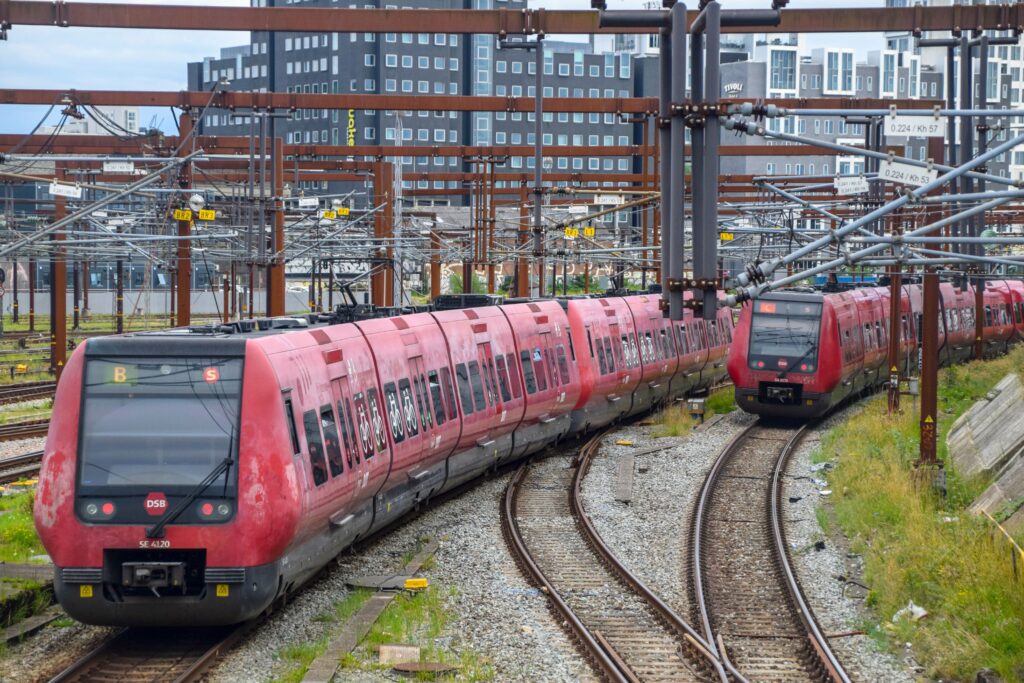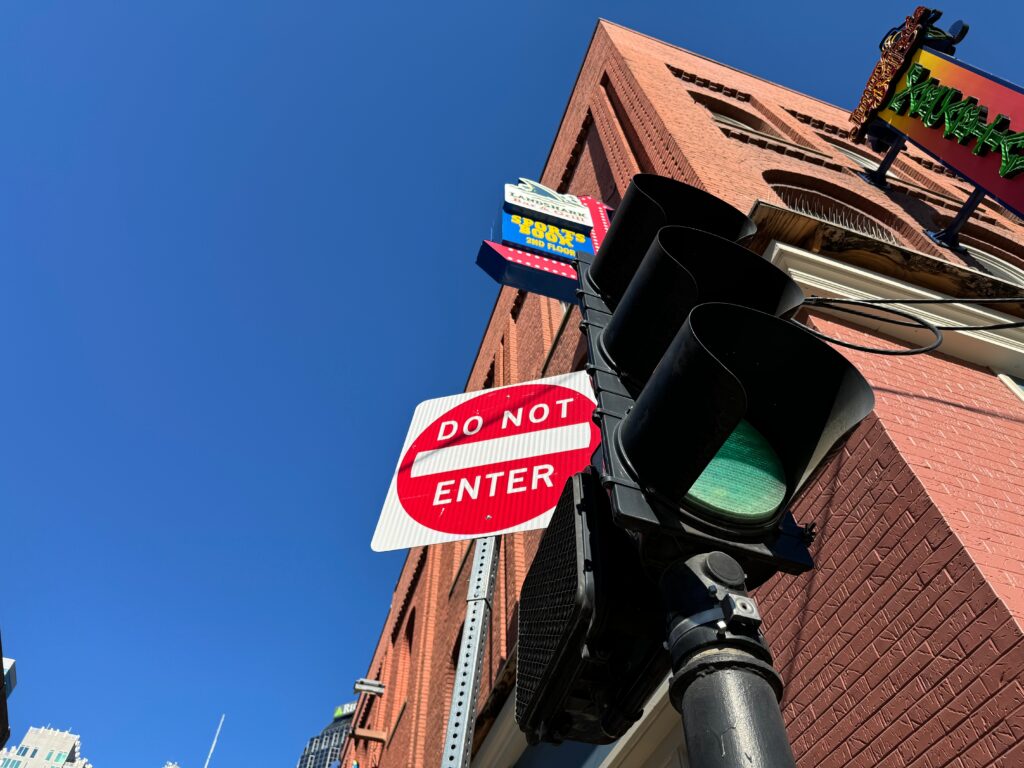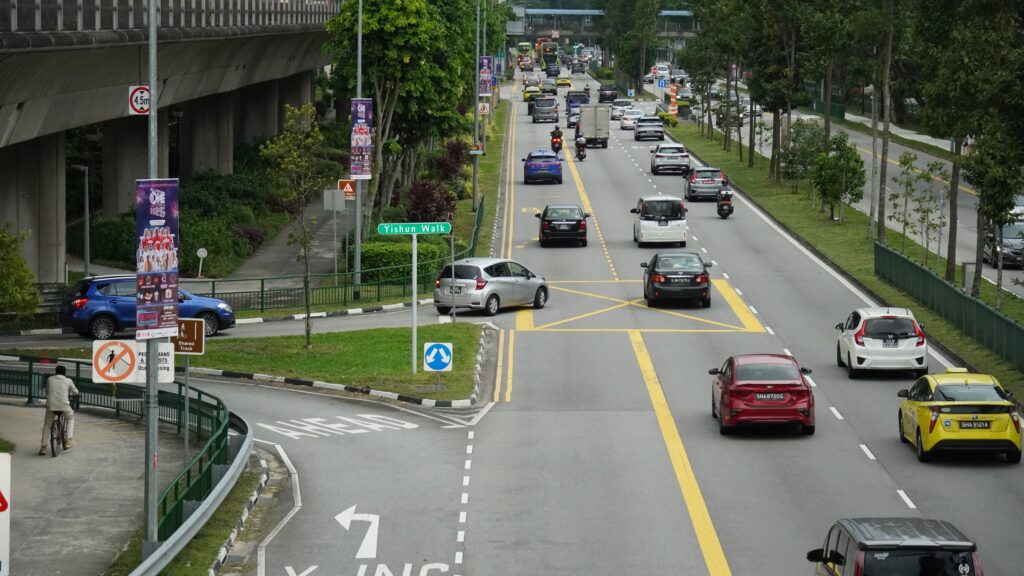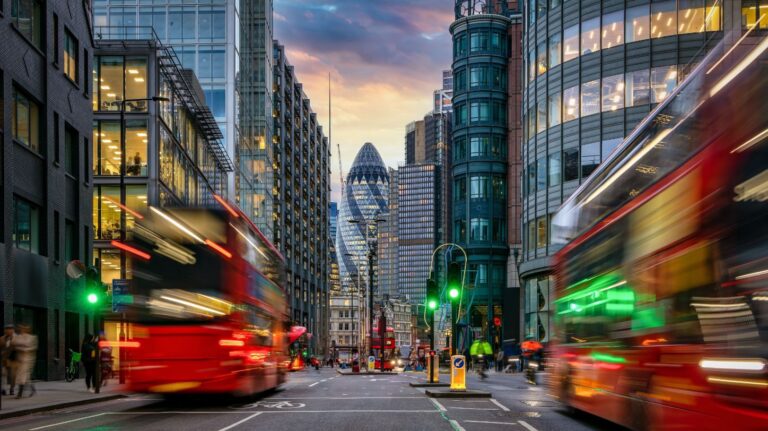How is artificial intelligence and data helping cities cut congestion, curb emissions, and keep people moving?
Urban congestion, environmental concerns, and rising expectations around mobility and liveability are propelling cities to explore new ways of managing traffic. In 2025, the convergence of artificial intelligence (AI), edge computing, vehicle-to-everything (V2X) connectivity and big data analytics is unlocking unprecedented capabilities in dynamic traffic optimisation. With urban populations growing and transport networks under increasing pressure, the question is no longer whether cities should embrace intelligent systems – but how best to deploy them.
Across Europe and beyond, cities are beginning to prioritise technologies that allow for real-time visibility of road conditions, automated incident detection, and proactive congestion mitigation. From software-defined services and predictive modelling to multimodal Mobility-as-a-Service (MaaS) platforms, innovations are helping urban areas become cleaner, faster, and safer for all users. For example, Singapore has emerged as a global leader in AI-driven traffic management. In October 2024, the city-state launched an intelligent traffic system as part of its Smart Mobility 2030 initiative. The system draws from IoT sensors, CCTV, and environmental data to provide real-time insights, enabling dynamic routing and efficient crowd control during events.
Chris Bishop, head of APAC at Ipsotek, an Eviden business specialising in AI-powered video analytics for transport and critical infrastructure environments, underscores the foundational role of collaboration: “Without a strong relationship between government, local and state, and the private sector, the success of smart traffic initiatives will likely be uncertain.” He also cites the city-state’s ability to handle complex logistics for the Singapore Grand Prix – which temporarily transforms public roads into a racetrack – as evidence of a “deeply integrated and effective multimodal system”. A similarly integrated approach is being trialled in Monaco, where the Monapass platform consolidates public transport, cycling, parking and event access into a single app. “Monapass was created by Flowbird in partnership with Extended Monaco and Compagnie des Autobus de Monaco,” explains Frederic Laithier, mobility product manager at Flowbird, a global provider of urban mobility solutions specialising in ticketing, parking, and transport payment systems. “With more than a million journeys recorded and over 40,000 users, it supports environmental targets such as reducing light vehicle traffic by 20% by 2030.”
FAST FACT: Solihull is trialling AI-controlled traffic lights, using sensors to detect cyclists up to 30m away. Source: Solihull Metropolitan Borough Council
In the USA, cities such as Nashville are upgrading legacy infrastructure. The Metropolitan Government of Nashville and Davidson County (Metro), oversees the region’s transportation systems and urban services. “Our current traffic system is like setting a watch,” says Derek Hagerty, assistant chief for transportation systems management for Metro. “We’re replacing it with smart signals that can see, talk and think. These systems use radar, lidar, and video to detect congestion and adapt in real time – improving travel times by an estimated 10%.”
Driving traffic optimisation
Adding a UK perspective to this landscape, Transport for Greater Manchester (TfGM) has been advancing the use of digital twins – the virtual modelling of real-world systems – since at least 2018, when it undertook its first 3D building information modelling (BIM) project handover with cloud-based platform REBIM. This initiative marked the beginning of TfGM’s journey into digital twin technology, aiming to enhance asset information management and operational efficiency. In recent years, TfGM has intensified its efforts to integrate digital twin technology into its transport infrastructure. In 2024, the transport authority partnered with Aimsun, a global software company specialising in traffic simulation, modelling, and forecasting tools for transportation planning and operations, to develop a comprehensive, fully integrated transport model for Greater Manchester.

This model encompasses a 100-square-mile area within the M60 ring road and is designed to support the Bee Network – Greater Manchester’s vision for a more integrated, accessible, and affordable public transport and active travel system. The Aimsun model is multi-scale, incorporating strategic macroscopic, mesoscopic, and detailed microscopic layers. It integrates continuous data sources, including SCOOT traffic flows from the urban traffic control system, bus automatic vehicle location data, and automatic traffic counters. This architecture enables real-time traffic management and supports transport planning and traffic management within the Bee Network.
SCOOT over
Notably, London’s Ultra Low Emission Zone (ULEZ) and expansion into predictive congestion pricing demonstrate how cities can blend AI and policy tools to address environmental goals. According to data released by Transport for London (TfL) and the Mayor of London’s Office in August 2024, marking the first anniversary of the ULEZ expansion to cover all London boroughs, roadside nitrogen dioxide levels were 27% lower across the capital, and particulate matter emissions from vehicles were 31% lower in outer London compared to projected levels without the ULEZ expansion.
Complementing these efforts, TfL partnered with Siemens Mobility – now Yunex Traffic – in June 2018 to develop the Real Time Optimiser (RTO), a cloud-based traffic signal management system designed to replace London’s decades-old SCOOT system. By June 2024, TfL and Yunex Traffic successfully migrated the entire network of approximately 6,400 traffic signal junctions and pedestrian crossings to RTO – one of Europe’s largest traffic signal upgrades – without disruption to the city’s road network. The RTO integrates data from over 16,000 traffic detectors and provides TfL with enhanced insights into journey demand and road network patterns.
 “By generating synthetic data and predictive scenarios, cities can better anticipate demand, test interventions virtually and manage disruptions more effectively.” –Lisa Donnelly, vice president of product, Cubic³
“By generating synthetic data and predictive scenarios, cities can better anticipate demand, test interventions virtually and manage disruptions more effectively.” –Lisa Donnelly, vice president of product, Cubic³
This enables better signal timing management, optimising green phases for pedestrians, cyclists, buses, and cars. According to Carl Eddleston, TfL’s director of network management and resilience, the system is a “game-changer”, supporting goals to reduce congestion, improve air quality, and prioritise healthier travel modes. The upgrade also lays the groundwork for the introduction of Fusion, an intelligent adaptive control optimiser that will further enhance traffic flows and environmental outcomes across the UK capital. Furthermore, TfL is exploring the use of cutting-edge machine learning models in order to predict pollution levels more accurately by analysing data on traffic patterns, weather conditions, and other factors.
This predictive analysis allows the city to take proactive measures to reduce pollution before it becomes problematic, such as adjusting traffic flows or implementing temporary restrictions. Ben Taylor, enterprise architect at Netcompany, an international IT services firm specialising in digital transformation projects across the public and private sectors, including transport, health, defence, and government, comments on the UK’s progress: “Technologies such as digital twins and real-time monitoring offer a glimpse into the future of proactive traffic management. But wider rollout depends on policy frameworks that facilitate data sharing and ensure rural areas are not left behind.” Such innovations are powered by a range of emerging technologies.

Lisa Donnelly, vice president of product at Cubic³, a provider of AI-powered traffic management and mobility solutions, highlights the combined impact of 5G and edge computing: “Edge computing, for example, processes vast data volumes locally, reducing latency and supporting real-time decisions. What’s more, the convergence of connected vehicles, intelligent infrastructure and real-time analytics is enabling truly responsive mobility systems.”
Generative AI (GenAI) is also coming into play. “GenAI will play an increasingly important role in traffic simulation, route optimisation and infrastructure planning,” says Donnelly. “By generating synthetic data and predictive scenarios, cities can better anticipate demand, test interventions virtually and manage disruptions more effectively.”
FAST FACT: Dubai’s RTA will roll out 81 AI projects by 2030 aimed at cutting city-wide travel times by 20-30%. Source: Dubai RTA
Predictive analytics are proving invaluable not just for vehicles but for public transport. In Denmark, Netcompany is supporting Danish State Railways (DSB) with what Taylor describes as “one of Denmark’s largest AI projects”. “Service reliability has always been a key complaint from transport users. We’ve moved DSB from a static delay model to an AI-driven platform that uses historical data to improve accuracy by more than 98%. It now sends live updates to journey planners and apps, reducing passenger uncertainty and improving the customer experience.”

Taylor believes these capabilities should be scaled across transport modes and borders – but only if supported by robust infrastructure. “ADAS-equipped vehicles now generate terabytes of data per day,” he notes. “Processed in-vehicle using AI, summary data can be shared via V2X networks to help other users. But without action from governments to eliminate mobile dead zones in rural areas, these innovations will remain urban-centric.”
Integration and governance challenges
AI-powered systems introduce not only technical challenges but also ethical considerations. Transparency, accountability and fairness must be baked into these technologies from the outset, Bishop stresses: “While AI can optimise traffic flows, it’s crucial that these systems remain transparent in how they make decisions, especially if they prioritise certain transport modes or reroute vehicles. Public trust is key to adoption.”
Donnelly adds: “As AI becomes more embedded in public infrastructure, we need clear governance frameworks to ensure ethical use. This includes clarifying liability in decision-making processes, ensuring data privacy, and making sure algorithms do not inadvertently disadvantage specific groups, such as non-car users or those in lower-income areas.”

“While AI can optimise traffic flows, it’s crucial that these systems remain transparent in how they make decisions, especially if they prioritise certain transport modes or reroute vehicles.” – Chris Bishop, head of APAC, Ipsotek
The EU’s AI Act is poised to influence how cities deploy these technologies, setting standards for transparency and risk management. Similar policy initiatives in the UK, such as the Centre for Data Ethics and Innovation’s AI assurance framework, aim to foster responsible AI deployment across sectors, including transport.
That tension between innovation and infrastructure resurfaces in the realm of governance. Donnelly warns that interoperability remains a sticking point: “Differing data formats, communication protocols and legacy systems hinder the integration of datasets across vehicles, infrastructure and platforms.”
She also points to gaps in accountability: “As vehicles become more autonomous, we face questions about data ownership and liability. Privacy is also a huge concern – particularly with mobile or in-vehicle data that might be personally identifiable. Thus, GDPR compliance is essential.”

Taylor concurs: “These aren’t issues unique to transport – they’re relevant across government, defence and health. But when solutions involve critical infrastructure, the risks grow. That’s why we must ensure that the data used to train and run AI systems is properly governed, integrated and shared securely.”
Despite these hurdles, momentum is building. “MaaS is not just an app,” says Laithier. “It’s a blueprint for rethinking cities. It connects people, services and infrastructure to deliver cleaner, smarter and more liveable environments.”
According to Donnelly, the convergence of AI, EVs, and data is key to achieving Net Zero: “Optimising traffic flow and reducing idling directly cuts emissions. Route optimisation, EV maintenance insights, and seamless payments for tolls or charging all reinforce this impact.”
Scaling ITS solutions
As 2025 progresses, the conversation around traffic management is rapidly evolving. Cities are no longer experimenting with digital tools – they’re implementing them at scale. And while the road ahead is not without its barriers, one thing is clear: AI and data-driven systems are not only reshaping traffic flow, but redefining how cities move, adapt, and thrive in an increasingly complex world.
What’s needed now is vision, leadership, and cross-sector cooperation. This is especially critical
as AI systems begin to extend beyond congestion management into areas such as road safety and environmental monitoring. For instance, intelligent traffic platforms are being paired with air quality sensors in cities such as London and Milan to monitor and manage pollution levels dynamically.
Real-time data on vehicle emissions is allowing authorities to trigger low-emission zones or incentivise cleaner transport options during peak pollution periods, showing how traffic management can contribute directly to public health outcomes.

Furthermore, advancements in machine learning models are enabling more accurate forecasts of not just traffic flows, but also of how changes in transport policy – such as the introduction of road pricing or congestion charging – might impact overall mobility patterns. “AI can simulate different policy scenarios and help cities assess the likely outcomes before making decisions,” adds Donnelly. This could be transformative for local governments looking to balance economic activity with environmental goals. As GenAI and connected vehicle networks become more embedded in urban systems, the potential for predictive and even prescriptive traffic management grows.

“We envision a future where AI systems don’t just react to congestion or incidents but proactively suggest infrastructure improvements or policy shifts.” – Ben Taylor, enterprise architect, Netcompany
“We envision a future where AI systems don’t just react to congestion or incidents but proactively suggest infrastructure improvements or policy shifts,” says Taylor. These insights could guide future investments, from redesigning road layouts to deploying adaptive public transport services based on predicted demand.
In short, the evolution of traffic management is accelerating, fuelled by AI, data and human ingenuity. The challenge now lies in ensuring that these tools are applied inclusively, ethically, and with a clear focus on delivering better outcomes for people and the planet.
From Copenhagen to Singapore, Monaco to Nashville, forward-thinking cities are showing that intelligent mobility is more than a concept – it’s a growing reality.
Navigating AI governance frameworks in transport
As AI systems become integral to traffic management, governments and organisations are introducing frameworks to ensure their responsible use.
Here are some key initiatives shaping the deployment of AI in urban mobility:EU AI Act: The European Union’s AI Act classifies AI systems by risk level, imposing stricter requirements on high-risk applications like traffic control. It mandates transparency, human oversight, and data governance, setting a global precedent for AI regulation.
UK Centre for Data Ethics and Innovation (CDEI): The CDEI has developed an AI Assurance Framework, guiding organisations on how to evaluate and communicate the trustworthiness of AI systems. This includes standards for fairness, accountability, and transparency.
ISO/IEC 42001: This emerging global standard provides a management system for AI, ensuring organisations apply robust governance across AI lifecycle stages, from development to deployment.
Ethical AI guidelines from ITS bodies: Industry groups such as ERTICO (Intelligent Transport Systems Europe) and the Institute of Electrical and Electronics Engineers (IEEE) also offer ethical guidelines tailored to transport technologies, promoting safety, inclusivity, and public engagement.These frameworks are critical to maintaining public trust and ensuring that AI deployments in traffic systems are transparent, accountable, and aligned with societal values. As Lisa Donnelly at Cubic³ notes, “Clear governance frameworks ensure AI doesn’t inadvertently disadvantage specific groups or compromise privacy.”
This article was originally published in the May 2025 issue of CiTTi Magazine.
Achievements and innovations in AI & data analytics will be recognised and celebrated at the fourth annual CiTTi Awards on 25 November 2025 at De Vere Grand Connaught Rooms in London. Visit www.cittiawards.co.uk to learn more about this unmissable event for the UK’s transportation sector!


